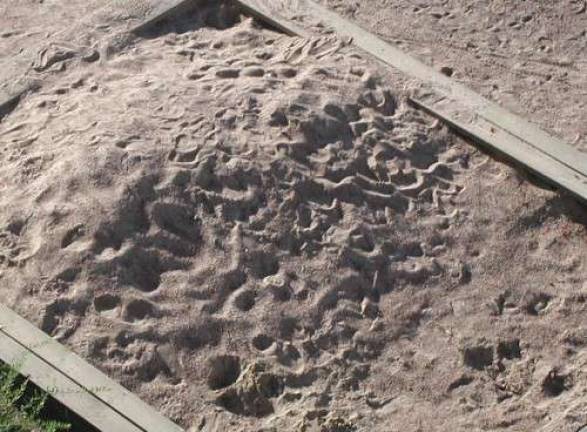Kids, Stay Away From Sandboxes, Doctors Say

Ask a New York City mom if she's worried about the sandbox germs her child plays in, and you're likely to get a "yes," along with a story about a disease that got passed around in one. Type "sandbox safety" on a parents' listserv and you'll usually see comments from parents who forbid or try to limit their children's access to sandboxes. But go to a pediatrician and you probably won't get a warning about the common play area. So sandbox diseases must be an urban myth spread by overprotective parents? Wrong, says Dr. Philip M. Tierno Jr., a clinical professor in the pathology and microbiology departments at New York University's medical school. Parents are smart to be concerned and vigilant, he says, particularly in public boxes that are not covered at night, like in New York City. He'd prefer his grandchildren didn't play in such sandboxes but admits "my recommendations only carry so much weight." "Children are little bags of germs," carrying more pathogenic organisms than adults, Tierno said, before adding that they are typically not infected by these dangerous beings. Pigeons and stray cats pose some of the bigger dangers to urban park sandboxes. Rats, a big New York City fear, can also lead to problems, Tierno said, but they are less of a risk because they tend not to spend much time in sandboxes unless there's food there, whereas a raccoon may burrow in and stay. Ants, spiders and other insects are also included on a long list of creatures that can lead to children's exposure to harmful parasites and bacteria. Tierno said there is the potential to be exposed to flesh-eating bacteria, necrotizing fasciitis, but stomach flu and diarrhea are the most common ailments that result from children playing in sandboxes. He said that without an epidemiological study, it's difficult to quantify how big a problem it is. "When a child gets a cold or diarrhea, no one is going to go back and be able to trace it to the sandbox," he said. Tierno, along with many other doctors, maintains, "Open sandboxes should be avoided." If children do use them, he recommends they wash their hands thoroughly after use, never eat or drink in a sandbox and never use one if they have an open wound or cut. But he does not fault doctors who do not warn parents about this. "Pediatricians aren't the end-all of knowledge," he said. "They've got enough on their plate. It's up to parents to play the major role." Dr. Ari Brown, pediatrician and co-author of Baby 411 and Toddler 411, agrees that sandboxes left open at night should be avoided, although she's more concerned with the little creatures on the children than in the sand. "The No. 1 yucky thing," she wrote in an email, is pinworms, which come from "little kids who scratch their little heinies while playing in a sandbox, get the eggs on their hands and deposit the eggs in the sand unintentionally. Kid No. 2 shows up in the sandbox, plays with contaminated sand, puts his hands in his mouth and voila! Pinworms." Brown, based in Texas, was surprised to hear that New York sandboxes are left uncovered. She recalls that when she was a preschool teacher, she used a sensory table tub that they'd put sand and other materials in for children to touch. She said the risk of a messy house is substantially higher than stomach flu, which is why she suggests using a plastic tub with sand outside. Both the city Parks Department and the Central Park Conservancy, which takes care of about 20 boxes in the park, said they rake the sand daily for debris and change the sand at least once a year. In 1989, the New York Times reported that the city was reducing the number of sandboxes as a cost-saving measure. This week, a Parks Department spokesperson said that the sandbox reduction back then had more to do with their loss in popularity from the Robert Moses era, the 1930s, when many park boxes were built. "There has been a demand for creating new or revamping old ones and we look to include them in park renovation projects if the community requests them," Philip Abramson wrote in an email this week. He said sterilized "playground-grade" sand is used and that workers typically rake for hidden garbage on a daily basis. He added that nighttime covering wouldn't prevent "much contamination" since sandboxes would still be exposed during the day. Tierno said there are safer places in the playground. "Public parks have other things going on."